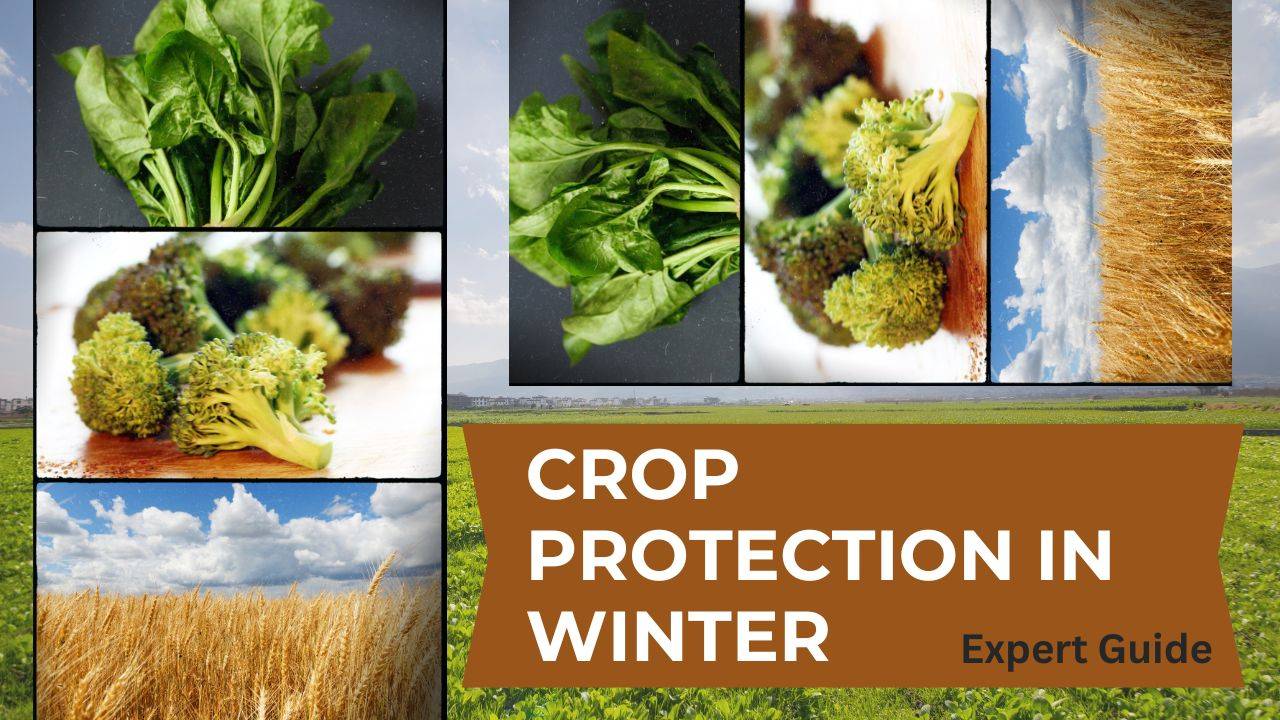
Winter weather conditions, including frost, negatively impact crops by affecting their quality and production. Dryness during this season can lead to bacterial diseases, causing spots on fruits and reducing their appeal and taste. The impact of temperature on crops varies, with some benefiting from frost, while others suffer damage. Root crops, like Brussels sprouts, thrive in temperatures below 5 degrees Celsius.
Crop care is susceptible to damage when exposed to temperatures ranging from 0.5 to 0 degrees Celsius. On the other hand, vegetables like asparagus, cucumbers, spinach, and radishes can experience harm when the temperature falls within the range of -1 to 0 degrees Celsius.
Follow These Measures To Protect Crops From Winter
Protecting crops from harsh winters is essential to ensure a successful and productive harvest. Here are some measures you can take to safeguard your crops:
-
Crop Selection: Choose crop varieties that are well-suited to your local climate and are more tolerant of cold temperatures. Cold-hardy crops are less susceptible to winter damage.
-
Mulching: Apply a layer of organic mulch, such as straw, leaves, or compost, around the base of your crops. Mulch helps insulate the soil, keeping it warmer and protecting the roots of your plants.
-
Row Covers: Use row covers or frost blankets to shield your crops from freezing temperatures. These lightweight fabrics can be draped over rows of plants to create a barrier against cold winds and frost.
-
Greenhouses and High Tunnels: If you have the resources, consider investing in a greenhouse or high tunnel. These structures provide a controlled environment where you can grow crops throughout the winter.
-
Cold Frames: Cold frames are smaller, unheated structures with transparent tops (usually glass or plastic) that capture heat from the sun. They can extend the growing season and protect sensitive plants from extreme cold.
-
Heating Systems: In extreme cold climates, heating systems can be used in greenhouses or high tunnels. These systems may use electric heaters, propane heaters, or other heating methods to maintain a suitable temperature.
-
Proper Pruning: Prune fruit trees and shrubs in late fall to remove dead or diseased branches. This helps reduce the risk of winter damage and encourages healthy growth in the spring.
-
Watering: Keep the soil adequately hydrated before the onset of winter. Well-hydrated soil retains heat better than dry soil, which can help protect the roots of your plants.
-
Snow Removal: In regions with heavy snowfall, gently remove snow from the branches of fruit trees and shrubs to prevent them from breaking under the weight of the snow.
-
Plant Windbreaks: Plant windbreaks like tall shrubs or trees around your crop fields to block cold winds and provide a microclimate that's less harsh for your crops.
-
Soil Preparation: Improve soil health and structure through organic matter amendments. Healthy soil retains heat better and provides a more stable environment for plant roots.
-
Timely Harvest: Harvest crops before the coldest temperatures arrive, if possible. Some crops can tolerate light frost, but extended exposure to freezing temperatures can damage them.
-
Monitoring: Keep an eye on weather forecasts and be prepared to take action when severe cold spells are predicted. Quick action can help minimize damage.
-
Crop Rotation: Implement a crop rotation plan to avoid planting the same types of crops in the same location year after year, which can lead to soil depletion and increased vulnerability to pests and diseases.
-
Varietal Research: Stay informed about new cold-resistant crop varieties that become available on the market, as breeding techniques continue to improve.
Remember that the specific measures you need to take may vary depending on your location and the types of crops you are growing. Consult with local agricultural extension services or experienced farmers in your area for tailored advice based on your specific circumstances.
















